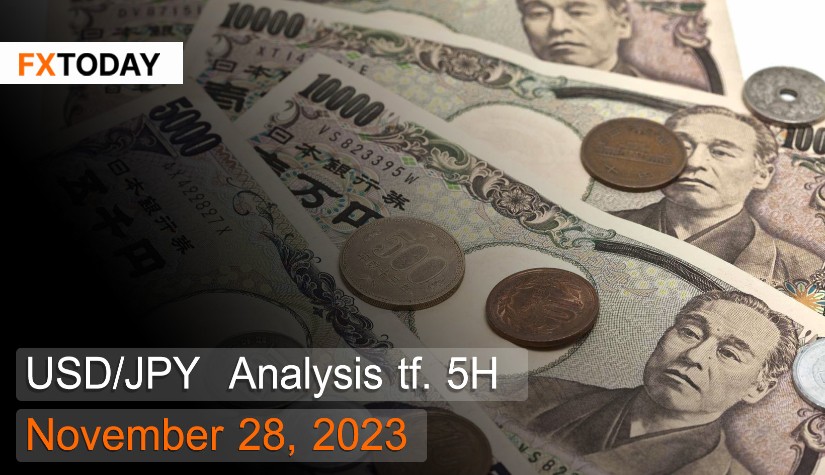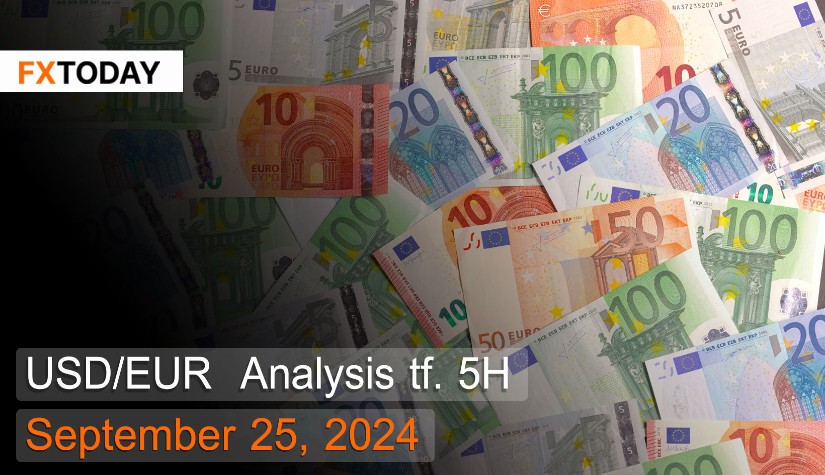Japan continues to face declining production issues.
The yen strengthened over the past week before slightly weakening today, largely due to the weakening of the US dollar. This was influenced by signals of economic slowdown in the US, with investors expecting the Federal Reserve to end rate hikes and potentially begin reducing rates next year. Japan's inflation rate has risen again amidst persistent weakness in the manufacturing sector.
The inflation rate in Japan increased to 3.3% year-on-year in October, up from 3.0% the previous month, remaining above the Bank of Japan's 2% target. Prices of major goods, such as furniture and household appliances, surged by 6.9%. However, fuel prices dropped by 10.0%, and electricity costs decreased by as much as 16.8%, benefiting several companies by easing cost pressures.
Food prices in Japan surged by 8.6% year-on-year in October, marking the highest increase since July 1976. Meat prices rose by 4.7%, while dairy and egg prices soared by a substantial 19.2%. Additionally, fresh vegetable, fruit, and grain prices increased by 14.3%.
Japan's leading economic index, which measures the economy's outlook for the next 2-3 months based on job applications and consumer confidence, dropped to 108.9 due to a rapid contraction in factory activity in September. This led to the steepest decline in production in three weeks, fostering uncertainty about income growth and rising expenses.
The Manufacturing Purchasing Managers' Index (PMI) fell to 48.1 in November, below the market's forecast of 48.8, indicating continuous factory contraction. New orders and production capabilities decreased. Moreover, increased raw material costs led to the second consecutive monthly decline in hiring.
Japan's 10-year government bond yields increased above 0.75% after a downward adjustment from the global bond prices hike. Recent data illustrates that inflationary pressures persist in various sectors of the economy. Additionally, the Bank of Japan (BOJ) has adjusted its yield curve control policy to 1% and aims to gradually reduce inflation rates for the fiscal years 2023, 2024, and 2025 until reaching the 2% inflation target.
Techical analysis data (5H)
Resistance: 148.98, 149.27, 149.70
Support: 148.26, 147.83, 147.54
Source: Investing.com
| Name | S3 | S2 | S1 | Pivot Points | R1 | R2 | R3 |
| Classic | 147.54 | 147.83 | 148.26 | 148.55 | 148.98 | 149.27 | 149.70 |
| Fibonacci | 147.83 | 148.11 | 148.27 | 148.55 | 148.83 | 148.99 | 149.27 |
| Camarilla | 148.50 | 148.56 | 148.63 | 148.55 | 148.76 | 148.83 | 148.89 |
| Woodie's | 147.62 | 147.87 | 148.34 | 148.59 | 149.06 | 149.31 | 149.78 |
| DeMark's | - | - | 148.41 | 148.62 | 149.13 | - | - |
Buy/Long 2: If the price breaks the resistance in the price range of 148.98 - 149.27, you may set a TP at approximately 149.70 and SL at around 147.83 or according to your acceptable risk.
Sell/Short 1: If the price touches resistance in the price range of 148.98 - 149.27 but cannot break the resistance at 148.98, you may set a TP at approximately 147.83 and SL at around 149.70 or according to your acceptable risk.
Sell/Short 2: If the price breaks the support in the price range of 147.83 - 148.26, you may set a TP at approximately 147.54 and SL at around 149.27 or according to your acceptable risk.
| Name | Value | Action |
| RSI(14) | 39.954 | Sell |
| STOCH(9,6) | 37.579 | Sell |
| STOCHRSI(14) | 29.201 | Sell |
| MACD(12,26) | -0.270 | Sell |
| ADX(14) | 40.763 | Sell |
| Williams %R | -74.856 | Sell |
| CCI(14) | -112.3643 | Sell |
| ATR(14) | 0.3936 | Less Volatility |
| Highs/Lows(14) | -0.4750 | Sell |
| Ultimate Oscillator | 44.279 | Sell |
| ROC | -0.815 | Sell |
| Bull/Bear Power(13) | -0.5510 | Sell |
|
Buy:0 Sell:11 Neutral:0 Summary:Strong Sell |
||
















